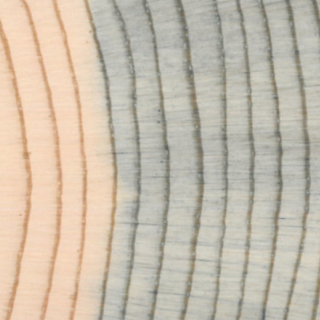Small Tree Competing Vegetation Study
Small Tree Growth Under Varying Levels of Competing Vegetation
Background & Objectives
Many existing stand and tree growth models have been calibrated using extensive records from mid-sized and large trees but with little information on small tree (< 4.5' in height) growth. Yet seedling and sapling growth and survival are key elements determining subsequent rates of stand development. Prior work has examined the relationship between small tree growth and non-tree understory vegetation. However, with increased emphasis on the retention of overstory trees following harvest, there is a pressing need to improve our understanding of how seedlings and saplings respond both to the abundance of understory vegetation and to the density of residual forest cover.
The objectives of this study are to (1) model the growth of small trees in the presence of overstory trees and understory vegetation, (2) model the change in amounts of understory vegetation in the presence of small trees and overstory trees, and (3) model the responses of understory vegetation and small trees following vegetation treatments.
Scope & Design
The project was initiated in 1999 and 25 study sites are now maintained across multiple ownerships from the east slope of the Cascades through to western Montana (see map below). Study sites were established in stands with various forest cover (e.g., mixed ponderosa pine, Douglas-fir, and grand fir types), with each stand exhibiting relatively homogeneous levels of site quality, overstory tree density, and understory competition. Sites were located in clearcuts, shelterwood and seed tree cuts, and in areas of heavy thinning.
At each site, three treatments were randomly assigned to multiple plots. The treatments consisted of (1) a control, (2) single application of a regionally-effective herbicide, and (3) periodic applications of a regionally-effective herbicide to remove understory competition.
In each plot, overstory trees (> 3.6” DBH) were tagged and understory vegetation (shrubs, forbs, and grasses) was measured in subplots and along transects. Small trees (> 1’ in height to 3.5” DBH) were tallied in subplots and 4-8 trees per species per plot were tagged for re-measurement. Re-measurements are taken every four years.
The following links show the height increment trends by site for
» ponderosa pine
» Douglas-fir
» lodgepole pine
» western larch
Timeline
Two re-measurements (8-year data) are now available on 21 sites, and three re-measurements (12-year data) on 9 sites.
Publications & Reports
McHugh, R.P. 2009. Effects of overstory retention and understory vegetation on small tree height growth in the Inland Northwest. M.S. Thesis, University of Montana, Missoula.
Salas, C., A.R. Stage, and A.P. Robinson. 2007. Modeling effects of overstory density and competing vegetation on tree height growth. Forest Science 54(1): 107-122.
Keller, K.A. 2005. Applying the prediction of four-year height growth of Douglas-fir and ponderosa pine saplings to an existing growth simulator. M.S. Thesis, University of Montana, Missoula.
Krebs, M.A. 2003. Effects of understory vegetation on the photosynthesis and leaf water potential of young Douglas-fir trees on two contrasting sites in northwestern Montana. M.S. Thesis, University of Montana, Missoula.
Data
Available to members or upon request.
